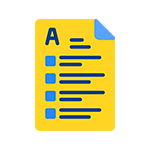Commas are a part of the punctuation marks that signify a soft pause as they are not final like periods. They play a versatile role in English. Hence, people are often confused about the appropriate usage of commas.
I’d rather be a comma than a full stop. …Chris Martin
Incorrect placement of punctuation marks is often a reason behind low scores among students. The inadequate understanding of this language makes them seek assignment help.
So, we decided to bring you an ultimate, user-friendly guide to excel in the usage of a comma. Besides, get ready to check out some wonderful tips to understand how to place commas correctly.
Must Read: Colon V/S Semicolon
Table of Contents
Why Are People Confused With Commas?
Many times commas are misplaced in the areas where they aren’t even required. Moreover, people often miss out on them where they’re required. In fact, sometimes they are used for restoring some clumsy sentences. As a result, students with poor writing skills end up at the doors of online assignment help specialists.
Commas come along with a set of rules; that’s one of the reasons why users feel puzzled while using them. Besides, the use of commas changes with the academic format and style.
For instance, as per the Associated Press (AP) Stylebook, the usage of the Oxford comma is restricted to only when clarity is required. Whereas, the Chicago Manual of Style stresses to use of Oxford commas in writing.
The certified assignment help experts are well-versed in every academic format & writing style. Thus, you can completely rely on them with your complicated tasks if you are clueless about how a comma works!
However, keep reading further to identify where you have been going wrong with the placement of a comma.
Must Read: College Assignment Help Tips to Write Compelling Blogs
Using Comma In General Writing: Some Common Do’s & Don’ts
A comma is a commonly used punctuation in writing. However, it is often placed students as they fail to remember the usage rules. If you’re in a hurry, an online assignment help professional can draft your flawless papers.
However, in case you’ve decided to write your own assignments, these general “comma usage” rules will enhance your results.
Where to Use Comma?
- Place a comma post a dependent clause, right at the beginning of a sentence.
- It should be used after using introductory phrases and adverbs such as – in fact, interestingly, and although.
- After a straightforward “Yes” or “No”.
- After you address someone directly.
- It is used to offset appositives.
- A comma is usually placed before coordinating conjunctions that link independent clauses, including – but, and, or, nor, and, yet, so.
- A comma is used right before the question tags.
- It is used to offset parenthetical elements and interrupters.
- A comma is used to neutralize the effect of non-restrictive and non-essential clauses.
- It separates multiple items in a list.
- We place a comma after the day while using the “month-day-year” format.
- It is used for separating proper names from the titles.
- While writing numbers greater than 999, use a comma after every set of three digits.
- It is used between coordinate adjectives.
- In American English, commas are used inside quotation marks.
- It is widely used between attributive tags and quotations.
Where To Avoid Comma?
- Do not use commas to offset essential or restrictive clauses.
- Commas aren’t used for separating a subject from its verb.
- We never use commas as a replacement for a period or semicolon. Doing that would lead to a comma splice.
- Avoid using commas after the term “than” while drawing comparisons.
- Commas are never placed between a year and a month.
- Never use commas while writing dates in the “day-month-year” format.
- Commas shouldn’t be used to separate two verbs that develop a compound predicate.
- Do not use commas in and before a list of only two items.
- It is not used while separating two nouns that form a compound object or compound subject.
Still confused? An assignment help master in English would be the right person to assist you!
Now, let’s look at the practical application of commas as per English writing rules.
Also, Read: Improve Your Marks with Assignment Help tips
8 Basic Rules For Using Comma: How To Place Comma Correctly?
1. To separate independent clauses while joining two complete ideas
Example:
- You can go movie with me, or you can go shopping alone.
- He entered the restaurant, and then he ordered a meal.
2. Place a comma after an introductory phrase or clause. Comma reflects that the introductory phrase or clause has arrived at the end. Besides, it shows that the main part is about to begin.
Example:
- When Samantha was ready to eat, her dog tripped on her plate.
- Near a huge mountain range at the top of a village, archaeologists discovered some hidden caves.
3. Place a comma to separate each item within a series.
Example:
- We planted sunflower, rosemary, and lily today. (Series of words)
- I promised that Betty would be a good dog, that she won’t bark at the neighbors, and that she won’t chew the shoes. (Series of clauses)
- Charlie looked through his desk, his suitcase, and around the house for the lost watch. (Series of phrases)
4. Commas help set off non-restrictive clauses.
Example:
- Kevin Parker, whose songs you like, will host a show next month.
- Marvin, who spends a whole week trekking, is back at work again.
5. A comma is used for indicating the direct address.
Example:
- I think, Shawn, you’re right.
- Shawn, I think you’re right.
- I think you’re right, Shawn.
6. You can place a comma to set off direct quotations.
Example:
- Harry said, “I enjoy swimming as it makes me feel free.”
- “I enjoy swimming as it makes me feel free”, said Harry.
- “I enjoy swimming,” proclaimed Harry, “As it makes me feel free.”
7. We use commas to set off appositives.
Example:
- The New Jersey Lions, the underdogs, mesmerized everyone with their award-winning performance.
- William Shakespeare, Bard of Avon, is popular for his legendary plays.
8. Commas are used with dates, titles, addresses, and numbers.
Example:
- On April 26, 1565, William Shakespeare was born in the United Kingdom. (Comma for dates)
- William Shakespeare was born in Stratford-upon-Avon, United Kingdom, in 1565. (Comma for addresses)
- Lilly Parker, VP, has been appointed to the board. (Comma for titles)
(Comma for numbers)
- 6,700 (or 6700)
- 200,999
- 7,999,888
Wrapping Up
Commas are a powerful tool in writing as they provide clarification. The separation of words with the help of a comma makes it easier for the readers to understand your ideas.
While commas indicate a pause; avoid over-using them since it can confuse. If you’re still confused about using commas, it’s best to take professional aid.
The qualified online assignment help writers are proficient in the usage of commas and craft easy-to-read sentences. We hope you found this post insightful!
 Santa Clara, CA 95050
Santa Clara, CA 95050 





